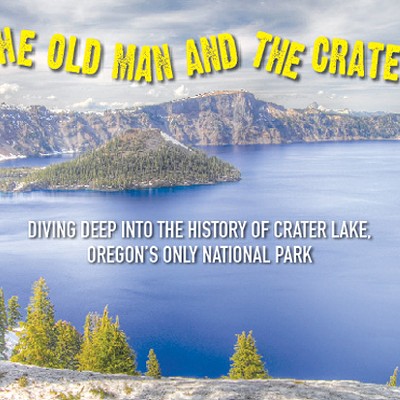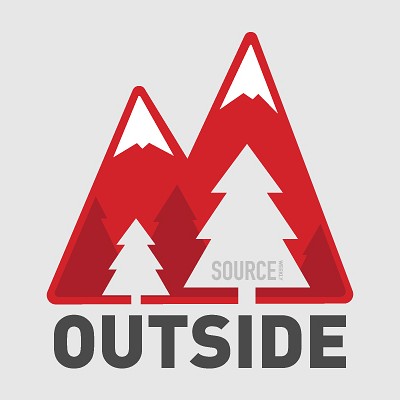The Klamath Hydroelectric Settlement Agreement made history April 6, with diverse groups and some former enemies signing an accord for the removal of four dams on the Klamath River. Once decommissioned, the dams will be transferred from Pacific Power to the Klamath River Renewal Corporation, then demolished, following a process administered by the Federal Energy Regulatory Commission (FERC). The April 6 agreement is intended to result in the largest river restoration project in the nation, and if all goes well, the river will flow freely again and salmon will return.
The agreement was signed by the tribal leaders for the Klamath, Karuk and Yurok Tribes, CEO of Pacific Power Stefan A. Bird, Oregon Gov. Kate Brown and California Gov. Edmund G. "Jerry" Brown, Jr. The federal government was represented by U.S. Secretary of the Interior Sally Jewell and Undersecretary of Commerce Kathryn Sullivan. Oregon Water Resources Department Director Thomas Byler, Oregon Dept. of Environmental Quality Interim Director Joni Hammond, presidents of several irrigation districts, property owners, and many other high ranking officials also signed. The signing ceremony was held, symbolically, on a fish cleaning table on the Yurok Reservation at the mouth of the Klamath River.
Another agreement, signed by the Klamath Tribes on Oct. 14, 1864, helped lead to this moment. In 1864, the U.S. was in the midst of the Indian Wars and engaging in full scale Indian removal to "open" the West for settlers. The Klamath Tribes' Treaty of 1864 resulted in the tribes ceding 23 million acres to the United States and joining two other tribes on a reservation of 780,000 acres in what is now Klamath County, Oregon. The Klamath (their original tribal name was "Maklak," meaning "the people"), by signing the treaty, reserved the tribes' right to harvest fish in rivers, lakes and marshes of the Upper Klamath Basin.
The reservation period lasted until 1954 when the Klamath Tribe was forcibly terminated by the Klamath Termination Act of the federal government under the U.S. Indian Termination policy. By 1973, all land that the Indians had held in common had been sold to private persons or acquired by the government for national forest or wildlife refuge purposes.
A new deal for the Klamath
The Klamath River runs from south-central Oregon to the Pacific Ocean in northern California and was once prime habitat for chinook and coho salmon, of great importance to the tribes who lived in the region. However, after more than a century of degradation to the Klamath River's salmon habitat a crisis moment occurred in 2002. The Klamath River fish kill was the largest die-off of salmon in the American West, resulting in 70,000 fish dying in the river. This disaster happened on the heels of the federal government ordering full water for the farmers despite the low water levels in the river and the threatened salmon. The story made national headlines.
The same year, a federal judge ruled that the Klamath Tribes' water right preceded non-tribal irrigators in the case "United States v. Adair," originally filed in the 1970s. Judge Owen Panner wrote:
"Although the reservation has now been terminated, members of the Klamath Tribe and the tribe itself have the right to sufficient water to protect their hunting and fishing rights on lands of the former reservation and for agricultural purposes on those lands. Protection of these rights, the court notes, will require maintenance of a natural stream flow through both an existing marsh and forest land on the former reservation."
It took until 2013 for the Klamath tribes' senior water rights to be enforced. In a 2013 adjudication process based on western water law of first in use, first in right, the tribes' senior water rights were court-affirmed to have a first priority date of "time immemorial." On June 10, 2013, the Klamath Tribes "called" their water right to return flow to the river. This brought farmers, ranchers, irrigation districts, the power company, forest service and the U.S. government back to the negotiation table.
Water Wars
Though the Klamath River was once the third-largest producer of salmon in the west, as a result of the six dams built on the river by Pacific Power between 1908 and 1962, only a fraction of the runs remain. In 1997, the U.S. National Marine Fisheries Service placed the river's coho salmon (also known as silver salmon) on the threatened list under the Endangered Species Act.
The tug of war between fishing, farming and hydropower on the Klamath became notorious as one of the worst water wars in the country. By 2001, without enough water for fish and farmers, the U.S. Bureau of Reclamation ordered water to farmers to be shut off, based on the Endangered Species Act. However, the following year, the U.S. Dept. of the Interior, under President George W. Bush, ordered the water released to the farmers. Following the massive Klamath fish die off, the Klamath Tribes began advocating for dam removal. Once the power company's operating license expired in 2006, it became plausible, and by February 2010 the Klamath Hydroelectric Settlement Agreement was signed and sent to Congress for approval.
Where's Walden?
The previous Klamath Agreement signed in 2010 required the approval of Congress by Dec. 31, 2015. Last year, just ahead of the deadline, Oregon Congressman Greg Walden's draft of the Klamath legislation specifically excluded dam removal, required the Klamath tribe to waive their water rights, ensured a guaranteed water and power supply for farmers and ranchers and granted 200,000 acres of federal timberland to two counties (100,000 to Klamath County in Oregon and 100,000 to Siskiyou County in California). The bill floundered and missed its approval deadline of Dec. 31, 2015.
After the missed deadline and many years of water wars, negotiation, threatened violence, inaction and finally, compromise, the 45 stakeholders to the Klamath River signed an amended agreement last week. This will clear the way for the John C. Boyle Dam in Oregon to be removed, as well as three dams on the Klamath in California, including the Iron Gate Dam, Copco 1 and Copco 2, all operated by Pacific Power, which is now owned by Berkshire Hathaway Energy. Dam removal, the company notes, is less expensive than relicensing the antiquated dams due to modern requirements for fish screens and ladders. The cost of removing the dams is estimated at $300 million, which will be funded by a pre-approved bond in California and Pacific Power customers.
Work to Do
Conservative groups continue to oppose the dam removal and the Endangered Species Act. Although the newly signed agreement is heralded as historic and lauded as a symbol of compromise, its opponents call it a tragedy for people living on the Klamath River. It's clear the agreement is an important part of a longer process with much more work to do. Oregon Senators Ron Wyden and Jeff Merkley, issued a joint statement:
"These agreements are a major step forward toward implementing the Klamath Basin water agreements. One agreement lays out a path toward a history-making project to remove dams and restore a river that is an Oregon icon, and a second agreement helps protect the water supply for farmers and ranchers and makes sure they won't bear new costs because of dam removal," the senators said.
In addition to the Klamath Hydroelectric Settlement Agreement, the second agreement referenced by the senators is known as the 2016 Klamath Power Facilities Agreement. This agreement is intended to help Klamath Basin irrigators avoid financial impacts associated with restoring the river and salmon after dam removal.
U.S. Dam Removals
A steady clip of dam removal projects in the U.S. in recent years shows that this is now becoming a mainstream concept for river restoration. In the Pacific Northwest, The Glines Canyon Dam in Washington, built in 1927, was demolished in 2012 as part of the Elwha River Restoration Project. The Elwah Dam, built between 1910 and 1913, also came down in 2012. In 2015, 62 dams were removed to restore rivers in the U.S, including Canyon Creek Meadows Dam and the Wimer and Fielder Dams in Oregon. There are still more than 2,200 dams in Oregon, Washington and California.
On the Klamath River, PacifiCorp will continue to own and operate the Keno Dam and will operate the Link River Dam, which is owned by the United States. Both dams are in Oregon. The Keno Dam regulates the water level in Keno Reservoir, and does not produce electricity.

























